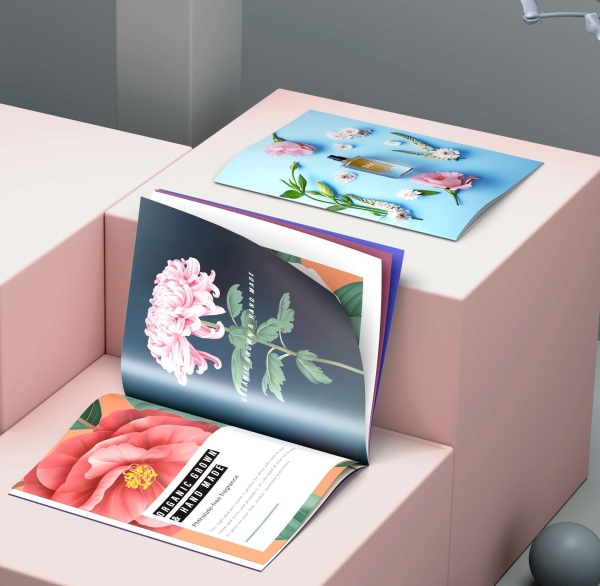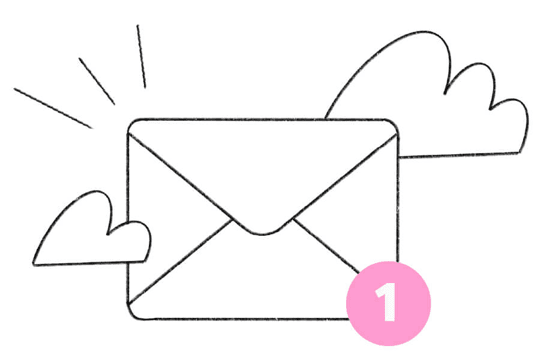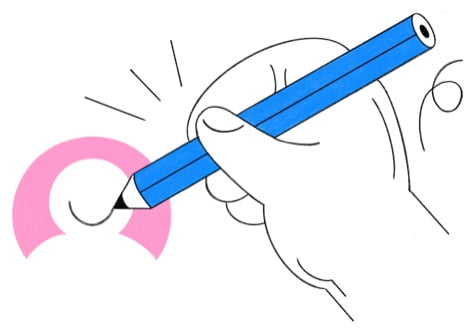Enter your text below:
 hello
helloFont
Color
Size (inches)
Quantity
Easy to Apply

Our name stickers are prduced on the best transfer materials so you’ll get it applied in no time.
The Highest Quality

We only use the finest materials to make sure your stickers get the quality they deserve.
Lasts 6 Years

Even in the roughest weather conditions our Instagram Name Stickers can last up to 6 years.
We're here to help
Contact our customer service team for any questions you have.
Most Popular Questions

Vinyl decals are those eye-catching, durable stickers you often see on storefronts, vehicles, and even laptops. They’re perfect for adding custom designs or lettering to just about any surface. At Jukebox, we want to make sure your vinyl lettering looks amazing and lasts as long as possible. So, we’ve put together some tips to help you set up your files, choose the best fonts, and understand why sizing and thickness matter.
How Small Can Vinyl Lettering Be Made?
At Jukebox, one of the most common questions we get is, "How small can my vinyl lettering be?" We totally get it—everyone loves the look of tiny text. But here’s the thing: the smaller the letters, the harder they are to produce, and they’re more likely to peel off. To keep your design looking sharp, we recommend sticking with letters at least 0.2 inches tall (about 18pt). Larger letters not only last longer but are easier to apply too!
Thickness Matters: Why Thin Lines Don’t Work Well
We all love sleek designs, but when it comes to vinyl lettering, thin lines are just asking for trouble. They’re difficult to cut and weed, and even harder to apply without breaking. For the best durability, make sure your lines are at least 1.5mm (0.06 inches) thick. This little bit of extra thickness goes a long way in keeping your vinyl decals looking great.
Font Size and Height for Vinyl Decal Lettering
A good rule of thumb for font size is to keep it at least 0.2 inches in height, which translates to around 18pt. Anything smaller makes cutting tricky and can lead to letters tearing or peeling off too soon. Larger fonts not only make a bigger impact visually, but they also last longer and are much easier to install.
Best Fonts for Vinyl Lettering
The font you choose can make or break your vinyl lettering. Some fonts are perfect for cutting, while others are simply too delicate. Here’s a quick guide to help you choose the right one:
Fonts We Love:

Bodoni: Classic and clean, this serif font is easy to read and cut.
Futura Bold: Bold and modern, it ensures easy application and durability.
Helvetica Light: Simple and timeless, this sans-serif font offers great readability.
Rockwell: A bold serif option, Rockwell has solid lines that cut smoothly.
Fonts to Avoid (For Small Decals):

Cotton Elegance Script: Beautiful but too intricate for small vinyl cuts.
Leander Script Pro: Thin lines can tear during weeding and application.
Helvetica Thin: Delicate and hard to cut at smaller sizes.
Tip: These restrictions mostly apply to smaller decals. The larger your design, the easier it gets to work with these fonts—so feel free to get creative when going big!
Good news! Our Vinyl Letter Maker includes fonts already optimized for vinyl lettering, so you can confidently choose one that works.
File Formats: EPS or PDF Are a Must
When sending us your files, always submit them in vector format, like EPS or PDF. This is super important because vector files maintain sharpness no matter how large or small your design is, ensuring clean cuts and perfect edges every time. Other file formats like JPEGs or PNGs just won’t cut it (literally)!
Setting Up Your File for Vinyl Lettering
Use Vector Files: Always use vector formats (.AI, .EPS, or .SVG) for the best precision.
Convert Text to Outlines: Before sending your file, make sure you convert all text to outlines. This ensures no unexpected font changes occur during production.
Mind the Spacing: Leave at least 1mm of space between design elements to make weeding and application easier.
Pick Your Colors: With our tool, you can select from 12 color options that’ll make your lettering pop!
Want Full-Color or Complex Designs? Go for Vinyl Die-Cut Stickers!
If you’re working with full-color artwork, logos, or detailed illustrations, vinyl die-cut stickers are the way to go. Unlike vinyl lettering, which only transfers individual letters, die-cut stickers allow for intricate shapes and vibrant colors. They’re perfect for more complex designs and come with a background for easy application. If this sounds like what you need, check out our Vinyl Die-Cut Stickers.
With these tips, creating vinyl decals for your next project is a breeze! Whether it’s for your business logo or a creative project, we’re here to help every step of the way. Need a hand? Don’t hesitate to reach out—we’ve got your back!
What is the difference between vinyl cut decals and vinyl printed stickers?

Example of Vinyl cut decals
Vinyl cut lettering and vinyl printed stickers are two different methods of creating designs with vinyl material.
Vinyl cut lettering involves cutting a design or text out of a solid color vinyl material using a plotter cutter. The excess vinyl is then weeded away, leaving only the desired design on a backing sheet. This method produces a design that is one color and has no background.
On the other hand, vinyl printed stickers involve printing a design onto a vinyl material. This method can produce designs with multiple colors and intricate details, as well as background colors and gradients.
In terms of uses, vinyl cut lettering is often used for creating custom text or logos for signs, vehicles, windows, and other surfaces. Vinyl printed stickers are commonly used for branding, product labeling, promotional materials, and as a decorative element for personal belongings.
It's important to consider the specific needs of your project when choosing between vinyl cut lettering and vinyl printed stickers. If you require a design with multiple colors or detailed artwork, then vinyl printed stickers may be the better choice. However, if you need a design with simple text or a logo, then vinyl cut lettering may be the more cost-effective option.
What is the difference between vinyl cut decals and vinyl printed stickers?
If you're deciding between vinyl cut decals and vinyl printed stickers for your project, understanding how they work can help you make the right choice. Both are great options, but they offer different styles and work best for specific purposes.
Feature | Vinyl Cut Decals | Vinyl Printed Stickers |
Best For | Simple logos, lettering, and shapes | Full-color designs, gradients, and photographs |
Colors Available | Mostly black and white, but also a rainbow of colors including gold and silver | Full range of colors and gradients |
Durability | Industrial-grade, lasts up to 6 years, UV and weather resistant | Durable but not suited for extreme outdoor conditions |
Background | No background; design is cut out | Printed with full-color backgrounds or transparent areas |
Common Uses | Window lettering, store logos, outdoor signage | Product labels, branding, creative artwork |
Vinyl Cut Decals:
Vinyl cut decals are your go-to when you want a clean, minimalist look. These decals are made by cutting out the design from a solid color vinyl—leaving no background—so your logo, text, or artwork pops right off the surface. They’re perfect for windows, signage, or storefront displays. Picture those crisp white letters you often see on shop windows—yep, those are vinyl cut decals doing their thing.
Vinyl cut decals are also built to last. They’re super tough and can handle up to 6 years of wear, whether it’s hot, cold, sunny, or even salty air if you’re by the coast.

When it comes to applying them, it’s a bit of a process. Grab a squeegee (or even a credit card if you don’t have one handy) and press the decal down firmly, smoothing it out to avoid bubbles. Once you’ve got it nice and flat, peel off the backing, and boom—your design is all set! The most popular colors are black and white, but you can also go for something fun like gold or silver to make your design stand out even more.
Vinyl Printed Stickers:
If your design is all about color and creativity, vinyl printed stickers are where it’s at. These stickers are made by printing your design directly onto the vinyl, so you can go wild with colors, gradients, and even intricate artwork. They’re perfect for projects where you want to make a statement—think product labels, creative branding, or eye-catching promotional stickers.
Applying vinyl printed stickers is super easy. You just peel them off the backing and stick them right where you want—no tools, no fuss. They’re a great option when you need something that’s vibrant and flexible.
Which One Should You Choose?
The big question is: What does your design look like?
If you’re going for something simple—like a logo or text in one color—vinyl cut decals are the best choice. They’re durable, industrial-grade, and perfect for sleek, minimal designs that will hold up outdoors. You’ll just need a squeegee (or a card) to apply them, and you’re good to go.
On the flip side, if your design is full of color, details, or gradients, vinyl printed stickers are the way to go. They give you more freedom to play with your creativity, and you don’t need any special tools—just peel and stick!
In short:
If you want bold simplicity, go with vinyl cut decals.
If you’re after colorful creativity, vinyl printed stickers will bring your design to life.
Both options are durable and high-quality, so it really depends on the look and feel you’re going for.

























